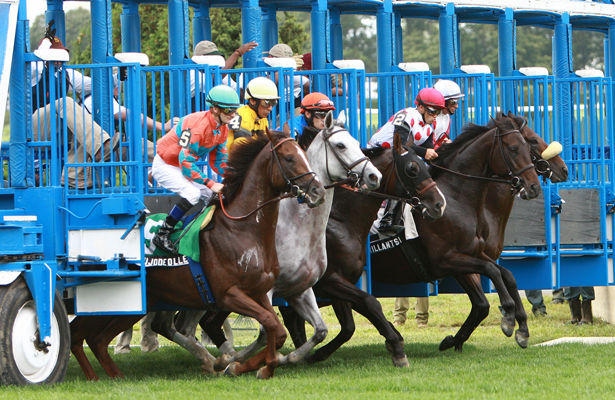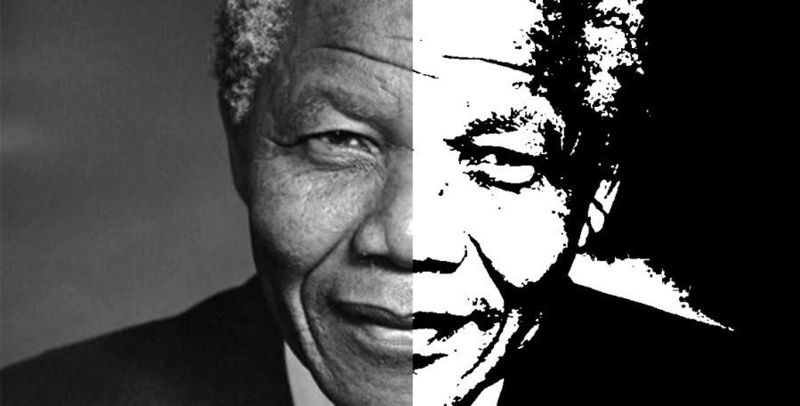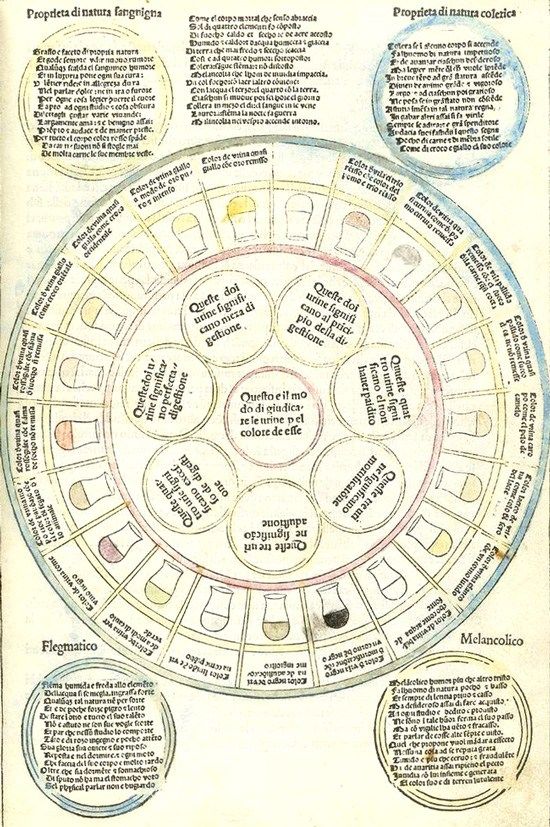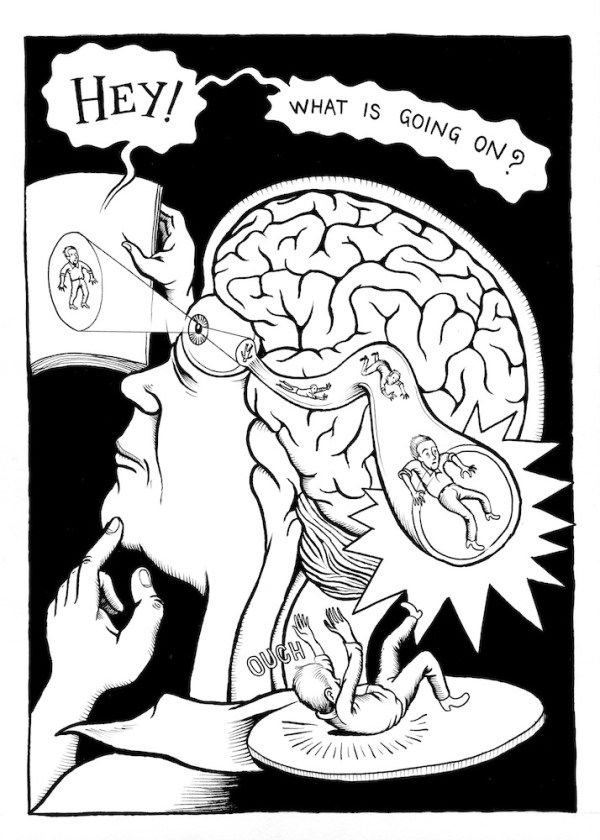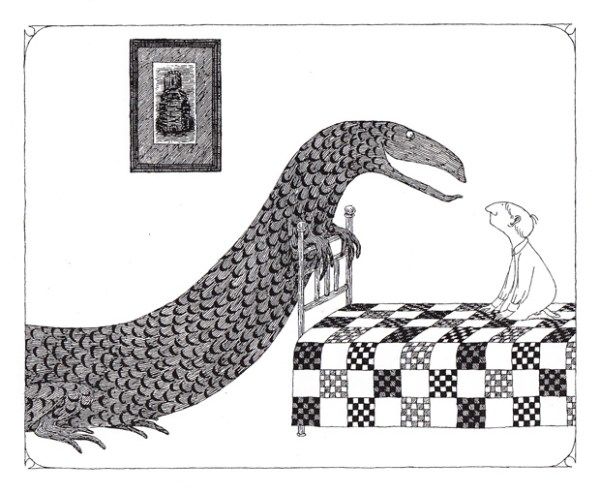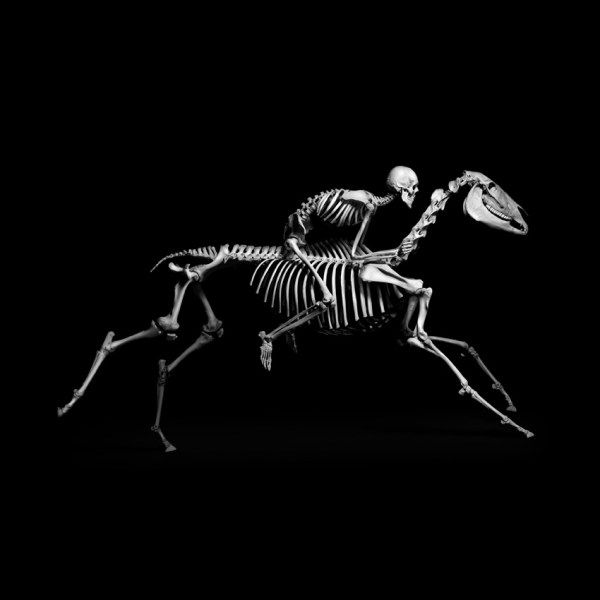Where Clinton Is Setting Up Field Offices — And Where Trump Isn’t | FiveThirtyEight

Posted on October 17th, 2016
What Is the Mandela Effect or Why Do Large Groups of People Misremember the Same Things?

Posted on October 17th, 2016
The Science of Stress and How Our Emotions Affect Our Susceptibility to Burnout and Disease
The Science of Stress and How Our Emotions Affect Our Susceptibility to Burnout and Disease
How your memories impact your immune system, why moving is one of the most stressful life-events, and what your parents have to do with your predisposition to PTSD.
By Maria Popova
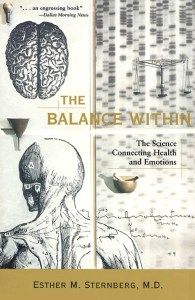 I had lived thirty good years before enduring my first food poisoning — odds quite fortunate in the grand scheme of things, but miserably unfortunate in the immediate experience of it. I found myself completely incapacitated to erect the pillars of my daily life — too cognitively foggy to read and write, too physically weak to work out or even meditate. The temporary disability soon elevated the assault on my mind and body to a new height of anguish: an intense experience of stress. Even as I consoled myself with Nabokov’s exceptionally florid account of food poisoning, I couldn’t shake the overwhelming malaise that had engulfed me — somehow, a physical illness had completely colored my psychoemotional reality.
I had lived thirty good years before enduring my first food poisoning — odds quite fortunate in the grand scheme of things, but miserably unfortunate in the immediate experience of it. I found myself completely incapacitated to erect the pillars of my daily life — too cognitively foggy to read and write, too physically weak to work out or even meditate. The temporary disability soon elevated the assault on my mind and body to a new height of anguish: an intense experience of stress. Even as I consoled myself with Nabokov’s exceptionally florid account of food poisoning, I couldn’t shake the overwhelming malaise that had engulfed me — somehow, a physical illness had completely colored my psychoemotional reality.
This experience, of course, is far from uncommon. Long before scientists began shedding light on how our minds and bodies actually affect one another, an intuitive understanding of this dialogue between the body and the emotions, or feelings, emerged and permeated our very language: We use “feeling sick" as a grab-bag term for both the sensory symptoms — fever, fatigue, nausea — and the psychological malaise, woven of emotions like sadness and apathy.
Pre-modern medicine, in fact, has recognized this link between disease and emotion for millennia. Ancient Greek, Roman, and Indian Ayurvedic physicians all enlisted the theory of the four humors — blood, yellow bile, black bile, and phlegm — in their healing practices, believing that imbalances in these four visible secretions of the body caused disease and were themselves often caused by the emotions. These beliefs are fossilized in our present language — melancholy comes from the Latin words for “black" (melan) and “bitter bile" (choler), and we think of a melancholic person as gloomy or embittered; a phlegmatic person is languid and impassive, for phlegm makes one lethargic.
And then French philosopher and mathematician René Descartes came along in the seventeenth century, taking it upon himself to eradicate the superstitions that fueled the religious wars of the era by planting the seed of rationalism. But the very tenets that laid the foundation of modern science — the idea that truth comes only from what can be visibly ascertained and proven beyond doubt — severed this link between the physical body and the emotions; those mysterious and fleeting forces, the biological basis of which the tools of modern neuroscience are only just beginning to understand, seemed to exist entirely outside the realm of what could be examined with the tools of rationalism.
For nearly three centuries, the idea that our emotions could impact our physical health remained scientific taboo — setting out to fight one type of dogma, Descartes had inadvertently created another, which we’re only just beginning to shake off. It was only in the 1950s that Austrian-Canadian physician and physiologist Hans Selye pioneered the notion of stress as we now know it today, drawing the scientific community’s attention to the effects of stress on physical health and popularizing the concept around the world. (In addition to his scientific dedication, Selye also understood the branding component of any successful movement and worked tirelessly to include the word itself in dictionaries around the world; today, “stress" is perhaps the word pronounced most similarly in the greatest number of major languages.)
But no researcher has done more to illuminate the invisible threads that weave mind and body together than Dr. Esther Sternberg. Her groundbreaking work on the link between the central nervous system and the immune system, exploring how immune molecules made in the blood can trigger brain function that profoundly affects our emotions, has revolutionized our understanding of the integrated being we call a human self. In the immeasurably revelatory The Balance Within: The Science Connecting Health and Emotions (public library), Sternberg examines the interplay of our emotions and our physical health, mediated by that seemingly nebulous yet, it turns out, remarkably concrete experience called stress.
With an eye to modern medicine’s advances in cellular and molecular biology, which have made it possible to measure how our nervous system and our hormones affect our susceptibility to diseases as varied as depression, arthritis, AIDS, and chronic fatigue syndrome, Sternberg writes:
By parsing these chemical intermediaries, we can begin to understand the biological underpinnings of how emotions affect diseases…
The same parts of the brain that control the stress response … play an important role in susceptibility and resistance to inflammatory diseases such as arthritis. And since it is these parts of the brain that also play a role in depression, we can begin to understand why it is that many patients with inflammatory diseases may also experience depression at different times in their lives… Rather than seeing the psyche as the source of such illnesses, we are discovering that while feelings don’t directly cause or cure disease, the biological mechanisms underlying them may cause or contribute to disease. Thus, many of the nerve pathways and molecules underlying both psychological responses and inflammatory disease are the same, making predisposition to one set of illnesses likely to go along with predisposition to the other. The questions need to be rephrased, therefore, to ask which of the many components that work together to create emotions also affect that other constellation of biological events, immune responses, which come together to fight or to cause disease. Rather than asking if depressing thoughts can cause an illness of the body, we need to ask what the molecules and nerve pathways are that cause depressing thoughts. And then we need to ask whether these affect the cells and molecules that cause disease.
[…]
We are even beginning to sort out how emotional memories reach the parts of the brain that control the hormonal stress response, and how such emotions can ultimately affect the workings of the immune system and thus affect illnesses as disparate as arthritis and cancer. We are also beginning to piece together how signals from the immune system can affect the brain and the emotional and physical responses it controls: the molecular basis of feeling sick. In all this, the boundaries between mind and body are beginning to blur.
Indeed, the relationship between memory, emotion, and stress is perhaps the most fascinating aspect of Sternberg’s work. She considers how we deal with the constant swirl of inputs and outputs as we move through the world, barraged by a stream of stimuli and sensations:
Every minute of the day and night we feel thousands of sensations that might trigger a positive emotion such as happiness, or a negative emotion such as sadness, or no emotion at all: a trace of perfume, a light touch, a fleeting shadow, a strain of music. And there are thousands of physiological responses, such as palpitations or sweating, that can equally accompany positive emotions such as love, or negative emotions such as fear, or can happen without any emotional tinge at all. What makes these sensory inputs and physiological outputs emotions is the charge that gets added to them somehow, somewhere in our brains. Emotions in their fullest sense comprise all of these components. Each can lead into the black box and produce an emotional experience, or something in the black box can lead out to an emotional response that seems to come from nowhere.
Memory, it turns out, is one of the major factors mediating the dialogue between sensation and emotional experience. Our memories of past experience become encoded into triggers that act as switchers on the rail of psychoemotional response, directing the incoming train of present experience in the direction of one emotional destination or another.
Sternberg writes:
Mood is not homogeneous like cream soup. It is more like Swiss cheese, filled with holes. The triggers are highly specific, tripped by sudden trails of memory: a faint fragrance, a few bars of a tune, a vague silhouette that tapped into a sad memory buried deep, but not completely erased. These sensory inputs from the moment float through layers of time in the parts of the brain that control memory, and they pull out with them not only reminders of sense but also trails of the emotions that were first connected to the memory. These memories become connected to emotions, which are processed in other parts of the brain: the amygdala for fear, the nucleus accumbens for pleasure — those same parts that the anatomists had named for their shapes. And these emotional brain centers are linked by nerve pathways to the sensory parts of the brain and to the frontal lobe and hippocampus — the coordinating centers of thought and memory.
The same sensory input can trigger a negative emotion or a positive one, depending on the memories associated with it.

This is where stress comes in — much like memory mediates how we interpret and respond to various experiences, a complex set of biological and psychological factors determine how we respond to stress. Some types of stress can be stimulating and invigorating, mobilizing us into action and creative potency; others can be draining and incapacitating, leaving us frustrated and hopeless. This dichotomy of good vs. bad stress, Sternberg notes, is determined by the biology undergirding our feelings — by the dose and duration of the stress hormones secreted by the body in response to the stressful stimulus. She explains the neurobiological machinery behind this response:
As soon as the stressful event occurs, it triggers the release of the cascade of hypothalamic, pituitary, and adrenal hormones — the brain’s stress response. It also triggers the adrenal glands to release epinephrine, or adrenaline, and the sympathetic nerves to squirt out the adrenaline-like chemical norepinephrine all over the body: nerves that wire the heart, and gut, and skin. So, the heart is driven to beat faster, the fine hairs of your skin stand up, you sweat, you may feel nausea or the urge to defecate. But your attention is focused, your vision becomes crystal clear, a surge of power helps you run — these same chemicals released from nerves make blood flow to your muscles, preparing you to sprint.
All this occurs quickly. If you were to measure the stress hormones in your blood or saliva, they would already be increased within three minutes of the event. In experimental psychology tests, playing a fast-paced video game will make salivary cortisol increase and norepinephrine spill over into venous blood almost as soon as the virtual battle begins. But if you prolong the stress, by being unable to control it or by making it too potent or long-lived, and these hormones and chemicals still continue to pump out from nerves and glands, then the same molecules that mobilized you for the short haul now debilitate you.
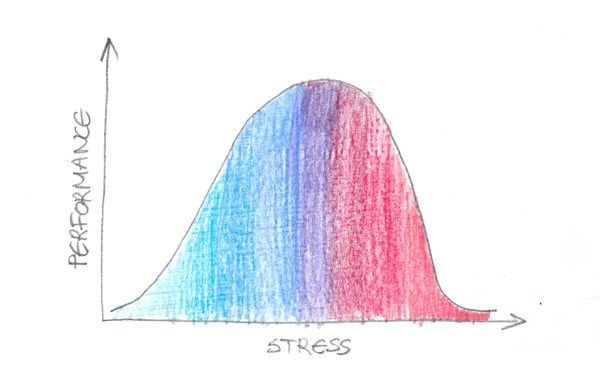
These effects of stress exist on a bell curve — that is, some is good, but too much becomes bad: As the nervous system secretes more and more stress hormones, performance increases, but up to a point; after that tipping point, performance begins to suffer as the hormones continue to flow. What makes stress “bad" — that is, what makes it render us more pervious to disease — is the disparity between the nervous system and immune system’s respective pace. Sternberg explains:
The nervous system and the hormonal stress response react to a stimulus in milliseconds, seconds, or minutes. The immune system takes parts of hours or days. It takes much longer than two minutes for immune cells to mobilize and respond to an invader, so it is unlikely that a single, even powerful, short-lived stress on the order of moments could have much of an effect on immune responses. However, when the stress turns chronic, immune defenses begin to be impaired. As the stressful stimulus hammers on, stress hormones and chemicals continue to pump out. Immune cells floating in this milieu in blood, or passing through the spleen, or growing up in thymic nurseries never have a chance to recover from the unabated rush of cortisol. Since cortisol shuts down immune cells’ responses, shifting them to a muted form, less able to react to foreign triggers, in the context of continued stress we are less able to defend and fight when faced with new invaders. And so, if you are exposed to, say, a flu or common cold virus when you are chronically stressed out, your immune system is less able to react and you become more susceptible to that infection.
Extended exposure to stress, especially to a variety of stressors at the same time — any combination from the vast existential menu of life-events like moving, divorce, a demanding job, the loss of a loved one, and even ongoing childcare — adds up a state of extreme exhaustion that leads to what we call burnout.
Sternberg writes:
Members of certain professions are more prone to burnout than others — nurses and teachers, for example, are among those at highest risk. These professionals are faced daily with caregiving situations in their work lives, often with inadequate pay, inadequate help in their jobs, and with too many patients or students in their charge. Some studies are beginning to show that burnt-out patients may have not only psychological burnout, but also physiological burnout: a flattened cortisol response and inability to respond to any stress with even a slight burst of cortisol. In other words, chronic unrelenting stress can change the stress response itself. And it can change other hormone systems in the body as well.
One of the most profound such changes affects the reproductive system — extended periods of stress can shut down the secretion of reproductive hormones in both men and women, resulting in lower fertility. But the effects are especially perilous for women — recurring and extended episodes of depression result in permanent changes in bone structure, increasing the risk of osteoporosis. In other words, we register stress literally in our bones.
But stress isn’t a direct causal function of the circumstances we’re in — what either amplifies or ameliorates our experience of stress is, once again, memory. Sternberg writes:
Our perception of stress, and therefore our response to it, is an ever-changing thing that depends a great deal on the circumstances and settings in which we find ourselves. It depends on previous experience and knowledge, as well as on the actual event that has occurred. And it depends on memory, too.
The most acute manifestation of how memory modulates stress is post-traumatic stress disorder, or PTSD. For striking evidence of how memory encodes past experience into triggers, which then catalyze present experience, Sternberg points to research by psychologist Rachel Yehuda, who found both Holocaust survivors and their first-degree relatives — that is, children and siblings — exhibited a similar hormonal stress response.
This, Sternberg points out, could be a combination of nature and nurture — the survivors, as young parents for whom the trauma was still fresh, may well have subconsciously taught their children a common style of stress-responsiveness; but it’s also possible that these automatic hormonal stress responses permanently changed the parents’ biology and were transmitted via DNA to their children. Once again, memory encodes stress into our very bodies. Sternberg considers the broader implications:
Stress need not be on the order of war, rape, or the Holocaust to trigger at least some elements of PTSD. Common stresses that we all experience can trigger the emotional memory of a stressful circumstance — and all its accompanying physiological responses. Prolonged stress — such as divorce, a hostile workplace, the end of a relationship, or the death of a loved one — can all trigger elements of PTSD.
Among the major stressors — which include life-events expected to be on the list, such as divorce and the death of a loved one — is also one somewhat unexpected situation, at least to those who haven’t undergone it: moving. Sternberg considers the commonalities between something as devastating as death and something as mundane as moving:
One is certainly loss — the loss of someone or something familiar. Another is novelty — finding oneself in a new and unfamiliar place because of the loss. Together these amount to change: moving away from something one knows and toward something one doesn’t.
[…]
An unfamiliar environment is a universal stressor to nearly all species, no matter how developed or undeveloped.
In the remainder of the thoroughly illuminating The Balance Within, Sternberg goes on to explore the role of interpersonal relationships in both contributing to stress and shielding us from it, how the immune system changes our moods, and what we can do to harness these neurobiological insights in alleviating our experience of the stressors with which every human life is strewn.

Posted on October 17th, 2016
Calgary Cat Up Late for Nearctic Surprise
 Jockey Luis Contreras guides Calgary Cat to victory (red and black silks) in the $300,000 dollar Nearctic Stakes at Woodbine
Jockey Luis Contreras guides Calgary Cat to victory (red and black silks) in the $300,000 dollar Nearctic Stakes at WoodbineCalgary Cat Up Late for Nearctic Surprise
by Myra Lewyn @MyraLewyn
Former Canadian champion sprinter Calgary Catstormed wide down the stretch and won in a tight finish over Stacked Deck and Conquest Enforcer in the $300,000 Nearctic Stakes (Can-IIT) Oct. 15 atWoodbine.
The son of Cowtown Cat scored by a head and finished six furlongs in 1:08.32 on firm turf under Luis Contreras for his 12th win and seventh stakes triumph from 26 starts. He is trained by Kevin Attard for Stephen Chesney and Cory Hoffman and snapped a three-race winless streak dating from a victory in the Achievement Stakes in June at Woodbine.
Stacked Deck outfinished favorite Conquest Enforcer by a head for second in the field of eight.
Stacked Deck took charge from pacesetter Expected Ruler in early stretch and was quickly challenged by Conquest Enforcer, who edged ahead in the final sixteenth. Calgary Cat, who raced in last through the opening quarter, was brought wide to rally and the 6-year-old gelding closed fastest of all to enter contention late and spring the surprise win at 15-1 odds. Stacked Deck came back to edge Conquest Enforcer for second.
Calgary Cat paid $33.90, $13.10, and $5.90, Stacked Deck returned $7 and $4.40, and Conquest Enforcer paid $3 to show.
Bred in Ontario by WinStar Farm, Calgary Cat is out of the A.P. Indy mare Big Sink Star, a half sister to grade II winner Waltzing Maltilda from the family of French highweight and group I winner Way of Light.

Posted on October 17th, 2016
Theory's Connections Mull BC Among Options
 Theory wins the 2016 Futurity. Coglianese Photos
Theory wins the 2016 Futurity. Coglianese PhotosTheory's Connections Mull BC Among Options
by Blood-Horse Staff
China Horse Club and WinStar Farm's Theoryemerged from the Oct. 15 Futurity (gr. III) at Belmont Park in fine fettle, according to trainer Todd Pletcher the day after the colt's 3 1/2-length triumph.
"He's excellent," said Pletcher. "He looked good this morning."
Pletcher added that the connections are still sizing up their options for the 2-year-old Gemologist colt, citing the $2 million Breeders' Cup Sentient Jet Juvenile (gr. I) Nov. 5 at Santa Anita Park, the $300,000 Remsen (gr. II) at Aqueduct Racetrack, or the Kentucky Jockey Club (gr. II) at Churchill Downs, both Nov. 26, as potential targets.
BALAN: Theory Impressive Again in Futurity
"I spoke to Elliot (Walden, of WinStar) a little bit yesterday, and figured we'd give it some time and get the horse back on the track before we firm anything up," Pletcher said. "If he ran back on short rest, I think it would be the Breeders' Cup. Otherwise, (he would run) in the Remsen or the Jockey Club."
Should Theory make the jump to the Breeder's Cup, he would join stablemate Syndergaard, second in the grade I Champagne Oct. 8, in the Juvenile.
Additionally, Pletcher reported that the rest of his band of Breeders' Cup contenders came out of their respective Saturday morning breezes in good order.
Al Shaqab Racing Racing and Gerard Augustin Normand's Ectot, who punched his ticket to the $4 million Breeders' Cup Longines Turf (gr. IT) with a five-length win over the formidable Flintshire in the Joe Hirsch Turf Classic (gr. IT), turned in his first breeze since his Oct. 1 victory, working a half-mile on the inner turf in :49.09 Saturday morning.
"He's a good work horse," Pletcher said. "He seemed happy to be back to work. I thought he breezed well. He looked good and came out of it in good shape this morning."
Eclipse Thoroughbred Partners' Curalina, who has been training up to the Breeders' Cup Distaff (gr. I) since her runner-up finish to the recently retiredCavorting in the grade I Personal Ensign Aug. 27, breezed five furlongs on the main track in 1:01.23. Third in last year's Distaff, Curalina could make a return appearance in this year's $2 million race, although Pletcher said that her connections are keeping a close eye on the $1 million Breeders' Cup Filly & Mare Sprint (gr. I) as well.
In the last two weeks, Forever Unbridled and I'm a Chatterbox, third and fourth in the Personal Ensign, have each came back to post impressive victories in the Beldame and Spinster (both gr. I), respectively, and are both expected to target the Distaff.
"It's no secret that the Personal Ensign was tough race and everyone's come out of it and run well," Pletcher said. "One of the reasons we haven't chosen which race is that complexion of both races changed significantly this last week, with Cathryn Sophia deciding not to go to the Sprint and Cavorting not going to the Distaff, so that's why we'll keep both races in play. I don't think it's really going to affect how we train her much until maybe her final breeze before."
Pletcher could have a pair of runners in the $1 million Breeders' Cup Juvenile Turf (gr. IT) Nov. 4, with With Anticipation (gr. IIT) winner Made You Look and Pilgrim (gr. IIIT) runner-up J. S. Choice both under strong consideration. J. S. Choice kept to his typical dirt training regimen Saturday in his first work since the Pilgrim, breezing a half-mile on the main track in :49.07, while Made You Look covered five-eighths on the inner turf in 1:02.14.
Teresa Viola Racing Stable's Photo Call is back in New York, training at Pletcher's Belmont base following her front-running, 2 3/4-length victory over Tepin in the First Lady (gr. IT) Oct. 8 at Keeneland. Ridden by Hall of Famer Kent Desormeaux in the First Lady, the 5-year-old Irish-bred will be pre-entered in both the Breeders' Cup $2 million Mile (gr. IT) and Filly & Mare Turf (gr. IT), said Pletcher, who added that Desormeaux, her fifth jockey in as many starts, could have the return call for her Breeders' Cup assignment.

Posted on October 17th, 2016
Found Among O'Brien's Breeders' Cup Possibles
 Found wins the 2016 Qatar Prix de l'Arc de Triomphe Katsumi Saito
Found wins the 2016 Qatar Prix de l'Arc de Triomphe Katsumi SaitoFound Among O'Brien's Breeders' Cup Possibles
by Blood-Horse Staff
Found could be aimed for a repeat bid in the Longines Breeders' Cup Turf (gr. IT) following her runner-up finish to Almanzor in the QIPCO Champion Stakes (Eng-I) Oct. 15 on British Champions Day at Ascot, trainer Aidan O'Brien said.
Starting just 13 days after capturing the Qatar Prix de l'Arc de Triomphe (Fr-I), the daughter of Galileo was far from disgraced behind trainer Jean-Claude Rouget's Almanzor, to whom she also finished second in the Irish Champion Stakes (Ire-I) last month.
LEWYN: Almanzor Handles Found in Champion Stakes
Found followed a similar path to the Breeders' Cup Turf last year at Keeneland and defeated Golden Horn, winner of the season's Arc and Investec Epsom Derby (Eng-I).
Speaking to England's Press Association a day after British Champions Day, O'Brien said all his runners emerged in good order and should not be discounted for the Breeders' Cup Nov. 4-5 at Santa Anita Park.
"Don't rule any of them in or out of America, even Found, and we'll decide in seven or 10 days' time."
O'Brien's top performer on British Champions Day was his 3-year-old filly Minding, who defeated males in the Queen Elizabeth II Stakes (Eng-I), adding to her top-level victories this year in the Investec Epsom Oaks, QIPCO One Thousand Guineas, Qatar Nassau Stakes (all Eng-I), and Sea The Stars Pretty Polly (Ire-I).
LEWYN: Minding Tallies Seventh GI in QE II Stakes
"I'm hoping she's going to stay in training, so she probably won't be (racing) again," the trainer said.
Order of St George, winner of the Gold Cup (Eng-I) this spring, finished fourth in the British Champions Long Distance Cup (Eng-II), after a third in the Arc. O'Brien said if he were to race again this year, he would be sent for the the Prix Royal-Oak (Fr-I, French St. Leger) Oct. 23 at Saint-Cloud.
"That's probably too quick, so I'd imagine he'll be let off for the year," he said.
Epsom Derby (Eng-I) runner-up US Army Rangerfinished eighth in the Champion Stakes, and Seventh Heaven finished fifth to Journey in the British Champions Fillies & Mares Stakes (Eng-I).
"We might leave (US Army Ranger) to next year now. He ran better than his placing looked," O'Brien said.

Posted on October 17th, 2016
Al's Gal Breaks Through in E. P. Taylor
 Al's Gal (inside) wins the E. P. Taylor Stakes
Al's Gal (inside) wins the E. P. Taylor StakesAl's Gal Breaks Through in E. P. Taylor
by Jeremy Balan @BH_JBalan
It took Ken and Sarah Ramsey's 5-year-old mare Al's Gal 26 starts to earn her first graded win, but it was a whopper Oct. 16 at Woodbine.
The daughter of English Channel trained by Mike Maker was part of a cavalry charge to the wire in the final stages of the $500,000 E. P. Taylor Stakes (Can-IT) and just got to the wire first by a head bob overSuffused to win the 1 1/4-mile turf event in a final time of 2:01.60.
Every filly or mare in the field of 12 was within five lengths at the wire, the top seven were within two lengths, and the superfecta was separated by three-quarters of a length.
Al's Gal stalked early leader Parvaneh in second as the fractions through six furlongs went in :26.05, :49.83, and 1:13.75, and was still a half-length behind the front-runner as the mile went in 1:37.93. Al's Gal had a half-length advantage with a furlong to run, as a host of contenders loomed to her outside, but dug in late under jockey Florent Geroux.
“There was no traffic for me today,” Geroux said. “When we broke from the gate, I was right there, (in) second position all the way and when I asked her turning from home, she just gave me a nice turn of foot and was very brave. I don’t have any game plan, especially with horses like this, who are very manageable and have tactical speed.”
Banzari closed from sixth to pick up the show placing, followed by Guapaza, Rainha Da Bateria,Swiss Range, Nezwaah, Parvaneh, Tuttipaesi, Strut the Course, Aim to Please, and favored Best In The World, to complete the order of finish.
The winner paid $14.30, $6.90, and $4.50 across the board. Suffused brought $7.70 and $5.60, while Banzari delivered $10.40 to show.
A two-time stakes winner, including a last-out score in the Kentucky Downs Ladies Marathon Sept. 15, Al's Gal had been knocking on the door in the graded ranks with seconds in the Beverly D. (gr. IT), Modesty (gr. IIIT), and Bewitch (gr. IIIT) this year.

Posted on October 17th, 2016
Erupt Runs Away With Canadian International
 Erupt wins the Pattison Canadian International Michael Burns Photo
Erupt wins the Pattison Canadian International Michael Burns PhotoErupt Runs Away With Canadian International
by Jeremy Balan @BH_JBalan
A day full of stakes upsets on the Woodbine grass culminated with Erupt’s 12-1 stunner in the $1 million Pattison Canadian International (Can-IT) Oct. 16.
Flaxman Holdings’ Dubawi colt trained by Francis-Henri Graffard raced in fourth in the backstretch of the 1 1/2-mile turf test, then unleashed a furious turn of foot in the stretch to burst away from his rivals and win comfortably by a length under jockey Stephane Pasquier.
“I was a bit worried about my stall number (post 8), but he started well,” Pasquier said. “We took good position right behind the leader and the race was perfect today. I feel that I had a lot of gas, actually. It went easily.”
World Approval shot to the front for a clear lead early and set slow fractions—:26.66, :52.79, 1:18.80, and 1:44.21 through a mile. The United Nations (gr. I) winner still held a half-length advantage as 1 1/4 miles went in 2:08.01, but tired in the stretch.
Dartmouth, who tracked World Approval in second through most of the race, held second at the wire, a half-length ahead of closing Wake Forest.
Erupt, a 4-year-old bay colt, finished off the 1 1/2 miles in 2:30.87. He came into the Canadian International winless in four 2016 starts, but provided back class as the 2015 Juddmonte Grand Prix de Paris (Fr-I) winner.
“We won a group I in France at 3-years-old, but it was a difficult start to this year,” Pasquier said. “Today he came back very easily and I'm very happy to have found my horse again.”
Erupt delivered $26.30, $9.50, and $5.60 across the board. Dartmouth brought $4.70 and $3.50, while Wake Forest delivered $5.10 to show.
The Pizza Man came in fourth, followed by heavy favorite Idaho, Danish Dynaformer, Taghleeb, World Approval, and Protectionist to complete the order of finish.
Erupt was bred in Ireland by the Niarchos Family, who race Erupt as Flaxman Holdings. He is out of the Caerleon daughter Mare Nostrum. He has a 5-1-1 record from 12 starts.

Posted on October 17th, 2016
»Running Mate, C, 2, 2014 by Creative Cause TDN Rising Stars – Writeup Page

Posted on October 17th, 2016











